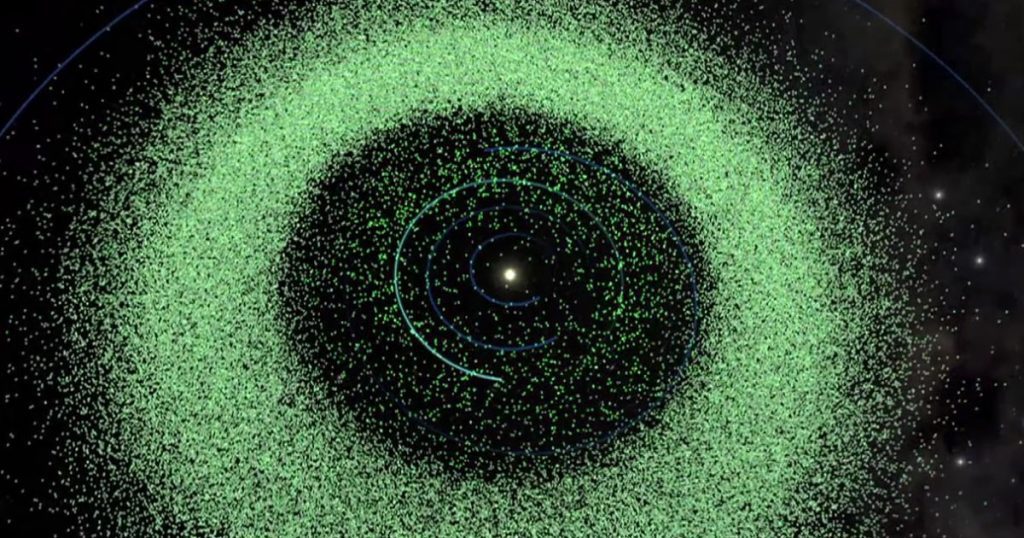
More than 100 previously unknown asteroids have been discovered with a new tool that can sift through existing huge data archives to find them Space rocks can be dangerous.
The discoveries were announced Tuesday by the B612 Foundation, a California-based nonprofit focused on tracking objects in the solar system and protecting the planet from Near-Earth Asteroids.
The organization said its newly developed platform, known as Asteroid Detection Analysis and Mapping, or ADAM, is an open-source, cloud-based system that allows researchers to discover newly discovered asteroids without the need to collect additional astronomical observations or launch new asteroid searches. telescope.
Instead, the system’s algorithm links points of light that correspond to the orbits of the asteroids from stacks of archival night sky images. If the cosmic object is confirmed to be an asteroid, the algorithm can then calculate its orbit and begin tracking the space rock, according to the B612 Foundation.
As such, “any telescope with an archive can now become an asteroid-hunting telescope,” said Ed Low, a former NASA astronaut and executive director of the B612 Foundation’s Asteroid Institute.
“We are using the enormous power of computation not only to enable more discoveries from existing telescopes, but also to find and track asteroids in historical images of the sky that were previously unnoticed because they were not intended to search for asteroids,” Lo He said in a statement.
Nearly 30,000 asteroids have been discovered near Earth so far, According to NASA. Of these, the agency is particularly interested in a small portion of space rocks that are at least 460 feet in diameter and oscillate within 4.6 million miles of Earth’s orbit around the Sun.
To test the Asteroid Detection and Mapping Analysis System, the platform was used to search images collected over a 30-day period by the National Optical and Infrared Astronomy Research Laboratory, a federal research facility in Tucson, Arizona. The images were taken from the lab’s collection of nearly 68 billion astronomical observations collected between 2012 and 2019.
The search yielded 104 newly discovered asteroids that have been confirmed and added to the Minor Planet Center’s asteroid registry. Founded in 1947, the Minor Planet Center is the organization responsible for cataloging asteroids, comets, and other objects in the Solar System.
“The Asteroid Institute’s work is important because astronomers have reached the limits of what can be detected with current technologies and telescopes,” Mario Yurick, associate professor of astronomy at the University of Washington who was involved in the research, said in a statement.
Juric co-created the new algorithm with Joachim Moeyens, a fellow graduate student at the University of Washington.
The system uses Google Cloud to store huge amounts of data and perform the complex calculations involved in examining every light point.
The Asteroid Detection Analysis and Mapping platform offers a new way for scientists to search for asteroids, adding to research already done by NASA and other space agencies.
“Asteroid detection and tracking is critical to understanding our solar system, enabling space development and protecting our planet from asteroid impacts,” Lu said.

“Web maven. Infuriatingly humble beer geek. Bacon fanatic. Typical creator. Music expert.”






More Stories
Scientists confirm that monkeys do not have time to write Shakespeare: ScienceAlert
SpaceX launches 23 Starlink satellites from Florida (video and photos)
A new 3D map reveals strange, glowing filaments surrounding the supernova